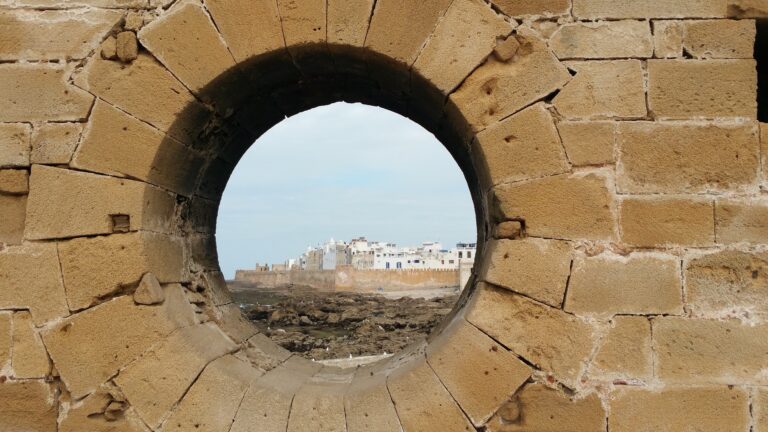

Day Trip Essaouira
Spend a day in the seaside community of Essaouira on a full-day trip, and discover an atmospheric medina, colorful bazaars, and a center that bustles with open-air cafes and seafood restaurants.
Medina
The Medina of Essaouira, formerly named Mogador (name originating from the Phoenician word Migdol meaning a « small fortress »), is an outstanding example of a fortified town of the mid-eighteenth century, surrounded by a wall influenced by the Vauban model. Constructed according to the principles of contemporary European military architecture, in a North African context, in perfect harmony with the precepts of Arabo-Muslim architecture and town-planning, it has played a major role over the centuries as an international trading seaport, linking Morocco and sub-Saharan Africa with Europe and the rest of the world. The town is also an example of a multicultural centre as proven by the coexistence, since its foundation, of diverse ethnic groups, such as the Amazighs, Arabs, Africans, and Europeans as well as multiconfessional (Muslim, Christian and Jewish). Indissociable from the Medina, the Mogador archipelago comprises a large number of cultural and natural sites of Outstanding Universal Value. Its relatively late foundation in comparison to other medinas of North Africa was the work of the Alaouite Sultan Sidi Mohamed Ben Abdallah (1757-1790) who wished to make this small Atlantic town a royal port and chief Moroccan commercial centre open to the outside world. Known for a long time as the Port of Timbuktu, Essaouira became one of the major Atlantic commercial centres between Africa and Europe at the end of the 18th century and during the 19th century.
Essaouira is an outstanding and well preserved example of a mid-18th century fortified seaport town, with a strong European influence translated to a North African context.
With the opening of Morocco to the rest of the world at the end of the 17th century, the Medina of Essaouira was laid out by a French architect who had been profoundly influenced by the work of the military engineer Vauban at Saint Malo. For the most part, it has retained its appearance of a European town.
For more information or quote, please contact us
Duration : 9am – 7pm